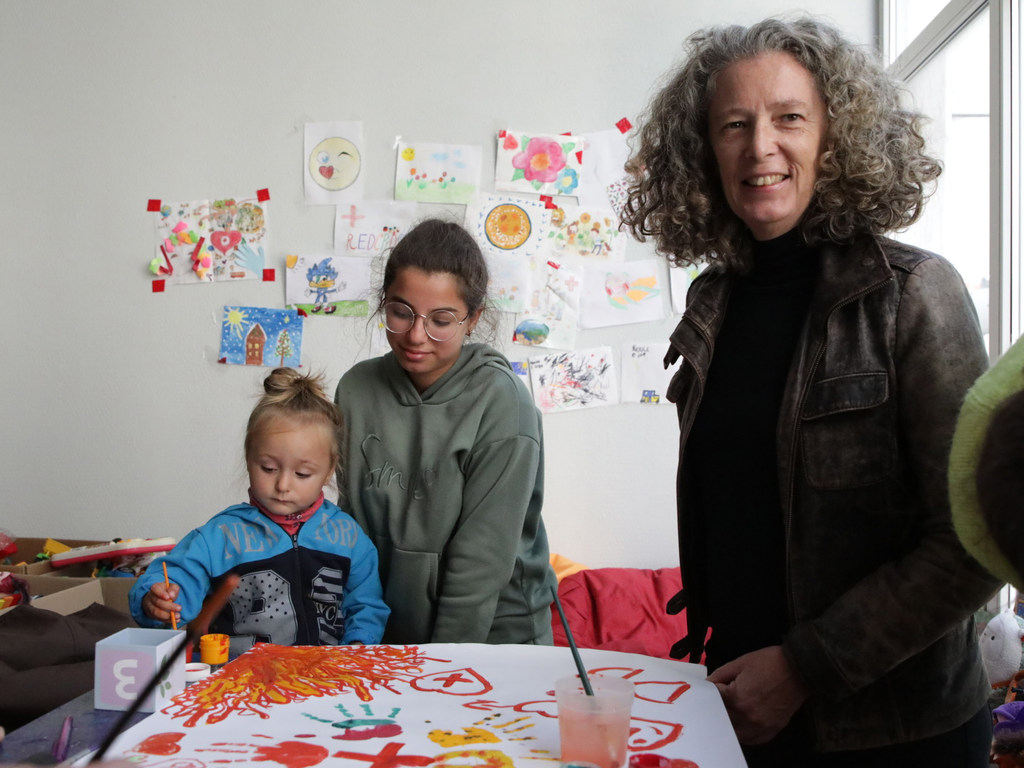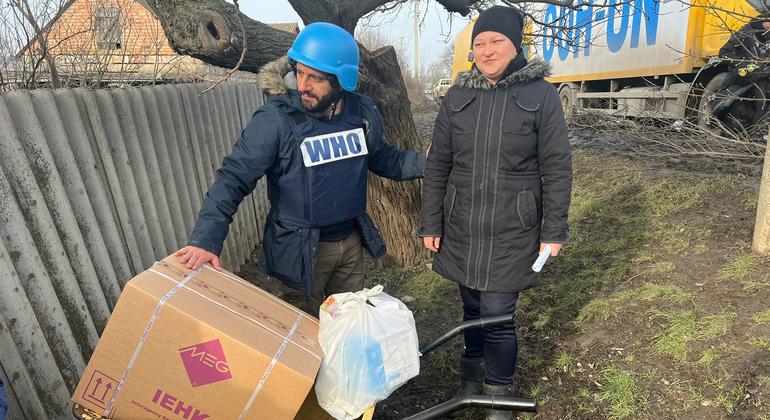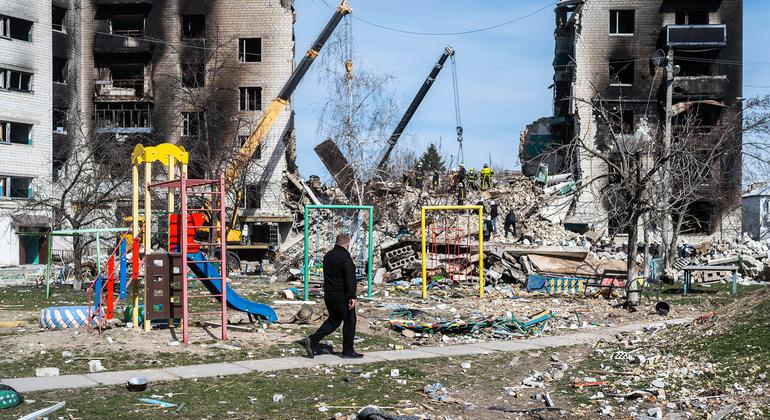Denise Brown is the UN Resident and Humanitarian Coordinator in Ukraine.
Based in the capital Kyiv, she works alongside around 20 UN agencies with some 2,600 staff, the majority Ukrainians.
She spoke to UN News about the challenges of supporting communities in a country at war.
“Conditions have been pretty difficult in Ukraine over the past year and we’ve had to adapt to some extreme circumstances.
There are constant air raid sirens, which means we are dashing in and out of the bunker all day long. In the past 12 months we’ve calculated that we’ve spent more than a month there holding meetings of all types, including with the Humanitarian Country Team or UN Member States.

UN Resident and Humanitarian Coordinator Denise Brown meets with two residents of the front-line city of Mykolayiv, in southern Ukraine.
Supporting the Ukrainian people
Our days here are too often unpredictable. There is no typical day, but one I remember very clearly was 10th October when the centre of Kyiv was hit by air strikes at 8.20am just 1.2 kilometres from my office. When I heard that explosion and the office started shaking, I thought “oh now would be a good time” to get into that bunker.
Our major focus is to support the Ukrainian people, especially with the delivery of relief items. We are working as close as possible to the front line, which requires meticulous planning and coordination.
I regularly visit front-line communities because I’m really insistent that UN staff are involved in these most difficult deliveries. We have the capacity, experience and resources. So, we spend quite a bit of time in places like Kherson, but also in different communities of the Kharkiv, Zaporizhzhia and Donetsk regions.
In November, there was such hope when Kherson was retaken by the Ukrainian Government. Three days later, we were there and it was quite moving. There were people out on the streets, waving at us when we entered the city with trucks full of supplies. But several months later, as you saw last week, there were continued airstrikes in the middle of the city and civilians were killed; volunteers have been killed, aid workers have been injured. It feels like it’s never going to end in Kherson.
But also, what’s never ending in Kherson is the strength and the hope of the people who stayed there and who have told me they will not leave. This is a real testament to the strength, conviction and resilience of the Ukrainian population.
Rebuilding communities
In January I travelled near Soledar, and along the side of the road I saw communities that had been completely flattened. I’m convinced that the determination of the people of Ukraine will mean these towns and communities will be rebuilt even though it may take a long time. The courage and the determination to make that happen is very prevalent here. It’s something that that strikes me in all the places that I visit.
Since I arrived, I’ve dedicated time to talk to people in the communities I visit, to meet and talk with the volunteers, the local authorities, the mayors. I think there are perhaps two individuals, both women, who I remember very well; the mayors of Kherson and Orikhiv, which is about three kilometres from the front line, in the Zaporizhzhia region. I was on the ground there for less than three hours and we counted at least 20 strikes anywhere from five to 10 kilometres away. It’s just constant blasts.
These mayors have decided to stay and they are working non-stop, taking care of their communities and they are our primary interlocutors with whom we are in constant contact.
During that trip to communities close to Soledar I also met a fantastic woman, a doctor. She took me to a clinic she had to set up in her own house after the health centre of the village was hit. She told me how determined she was to remain there and support the people who stayed behind.
So, these are courageous women who I think I will never forget.
Humanitarian needs
The war continues and is intensifying, so we can reasonably expect that the population will continue to be affected. This is a humanitarian crisis, although calling it a crisis seems so insignificant compared to the everyday reality we see on the ground.
There is not one main need but many. The most acute situation is close to the front line, where houses are flattened and health clinics are destroyed. One clinic I toured in the Kharkiv region was destroyed a month after I visited it.
These communities need everything, so we’re very committed to delivering relief items. We’re also very much focused on the psychosocial trauma suffered particularly by children but caring for them becomes increasingly difficult the closer we get to the front line.

Across the front line
We have access to all the territory controlled by Ukraine, but we have extremely limited access across the front line. Since February 2022, no humanitarian convoys have been able to cross between the two areas. We request this access very regularly at both Ministries of Defence in Ukraine and Russia, and while we consistently receive a positive response from the Ukrainian side, we have not yet received a similar response from Russia.
It’s essential that we have access across that front line. We’ll be able to go tomorrow if we get the green light but guarantees of safety are needed. It is imperative, and extremely urgent to send supplies and assist people living on the other side of the front line, who I’m convinced are in a desperate situation.
The suffering continues and until the war is over, we have to continue to support the people of Ukraine, who are living through the horrors the invasion is causing.”



